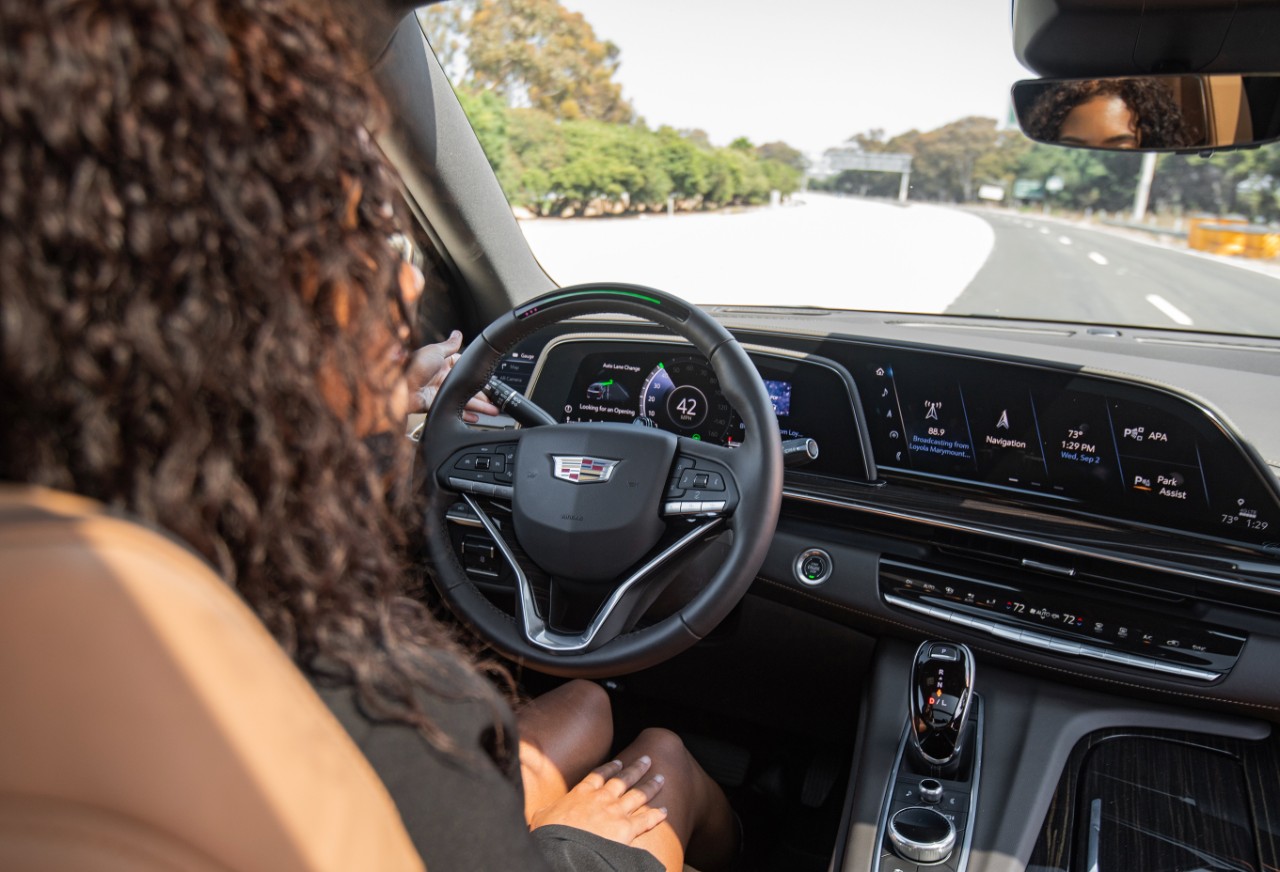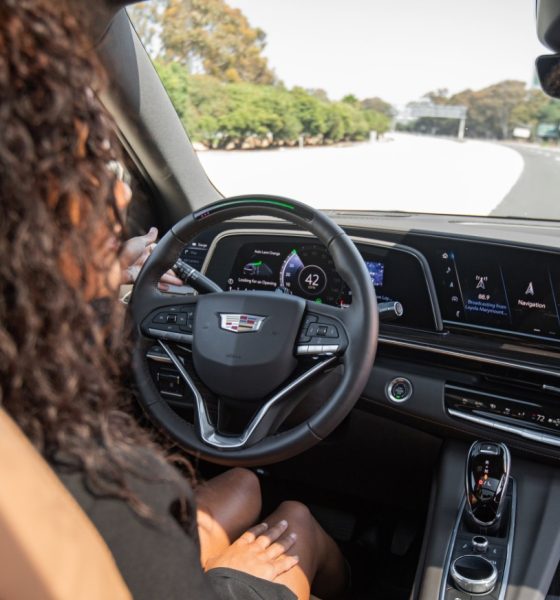

News
Survey shows Americans don’t trust self-driving cars. They also don’t know you can’t buy one.
A new survey revealed that a startling number of Americans feel less safe in a self-driving vehicle. However, the same survey also revealed that nearly one-in-four Americans believe you can currently buy a vehicle that is designed to let drivers take their eyes off the road.
The survey from Policygenius revealed that 76 percent of respondents are not convinced of a self-driving vehicle’s accuracy or safety, and they feel less safe in one rather than a human-controlled car. Additionally, 73 percent of people said they feel less safe knowing other people on the road are traveling in cars with self-driving features.
As self-driving features, semi and fully-autonomous vehicles begin to become more popular with companies like Tesla, Waymo, Cruise, and others pushing their driver assistance systems; the future is undoubtedly here. However, consumers are skeptical of the technology and its capabilities.
“Whether because of road rage, reckless driving, or car accidents, it’s understandable that many people are wary of taking their eyes off the road and relying on a self-driving car,” Rachel Brennan of Policygenius said. “As advances in autonomous vehicle technology continue, auto companies and insurance companies will need to resolve a number of challenges, from helping people feel safe on the road to navigating new insurance implications, like who is at fault in an autonomous vehicle incident.”
33 percent of respondents also stated that a car with full self-driving capability would still require constant attention. 80 percent said they would not pay more to own a car with self-driving features.
Unfortunately, this is not the first study that has supported these claims. AAA revealed in May 2022 that 85 percent of people are still fearful or unsure of self-driving tech; a number that has stayed relatively steady for several years, the survey’s report said. 85 percent also stated they would not feel comfortable using a self-driving vehicle to transport their loved ones.
The issue of liability also seems to raise some concerns with consumers. The survey said Americans are divided at 50/50 on who should be held responsible if a car crashes while self-driving features are in control: the driver or the manufacturer.
The issue is that consumers are not educated enough on the capabilities, or even the availability of self-driving vehicles. The same survey showed 24 percent of consumers believed fully-autonomous vehicles are available to buy and drive right now, which simply is not true.
RELATED:
General Motors’ Cruise taxis to expand to Phoenix and Austin
Self-driving vehicles are still years away, but semi-autonomous functionalities are still highly efficient and widely available across many manufacturers. Nearly every vehicle out there has some sort of driver assistance feature, which includes lane centering or traffic-aware cruise control. However, there is not a vehicle on the market right now that is capable of full autonomy, which would mean a driver could sleep during the vehicle’s operation.
You can’t necessarily blame consumers, though. In a quest for clicks, ad dollars, and viewership, YouTubers and other social media influencers have caricatured the capabilities of these vehicles, which has put out a false narrative of the real-world abilities of vehicles with self-driving features. No matter what you see or read, know that you or anyone else cannot walk onto a dealership lot or log onto a website and buy a car that drives you places. It does not exist.
I’d love to hear from you! If you have any comments, concerns, or questions, please email me at joey@teslarati.com. You can also reach me on Twitter @KlenderJoey, or if you have news tips, you can email us at tips@teslarati.com.

News
Tesla FSD fleet is nearing 7 billion total miles, including 2.5 billion city miles
As can be seen on Tesla’s official FSD webpage, vehicles equipped with the system have now navigated over 6.99 billion miles.

Tesla’s Full Self-Driving (Supervised) fleet is closing in on almost 7 billion total miles driven, as per data posted by the company on its official FSD webpage.
These figures hint at the massive scale of data fueling Tesla’s rapid FSD improvements, which have been quite notable as of late.
FSD mileage milestones
As can be seen on Tesla’s official FSD webpage, vehicles equipped with the system have now navigated over 6.99 billion miles. Tesla owner and avid FSD tester Whole Mars Catalog also shared a screenshot indicating that from the nearly 7 billion miles traveled by the FSD fleet, more than 2.5 billion miles were driven inside cities.
City miles are particularly valuable for complex urban scenarios like unprotected turns, pedestrian interactions, and traffic lights. This is also the difference-maker for FSD, as only complex solutions, such as Waymo’s self-driving taxis, operate similarly on inner-city streets. And even then, incidents such as the San Francisco blackouts have proven challenging for sensor-rich vehicles like Waymos.
Tesla’s data edge
Tesla has a number of advantages in the autonomous vehicle sector, one of which is the size of its fleet and the number of vehicles training FSD on real-world roads. Tesla’s nearly 7 billion FSD miles then allow the company to roll out updates that make its vehicles behave like they are being driven by experienced drivers, even if they are operating on their own.
So notable are Tesla’s improvements to FSD that NVIDIA Director of Robotics Jim Fan, after experiencing FSD v14, noted that the system is the first AI that passes what he described as a “Physical Turing Test.”
“Despite knowing exactly how robot learning works, I still find it magical watching the steering wheel turn by itself. First it feels surreal, next it becomes routine. Then, like the smartphone, taking it away actively hurts. This is how humanity gets rewired and glued to god-like technologies,” Fan wrote in a post on X.
News
Tesla starts showing how FSD will change lives in Europe
Local officials tested the system on narrow country roads and were impressed by FSD’s smooth, human-like driving, with some calling the service a game-changer for everyday life in areas that are far from urban centers.

Tesla has launched Europe’s first public shuttle service using Full Self-Driving (Supervised) in the rural Eifelkreis Bitburg-Prüm region of Germany, demonstrating how the technology can restore independence and mobility for people who struggle with limited transport options.
Local officials tested the system on narrow country roads and were impressed by FSD’s smooth, human-like driving, with some calling the service a game-changer for everyday life in areas that are far from urban centers.
Officials see real impact on rural residents
Arzfeld Mayor Johannes Kuhl and District Administrator Andreas Kruppert personally tested the Tesla shuttle service. This allowed them to see just how well FSD navigated winding lanes and rural roads confidently. Kruppert said, “Autonomous driving sounds like science fiction to many, but we simply see here that it works totally well in rural regions too.” Kuhl, for his part, also noted that FSD “feels like a very experienced driver.”
The pilot complements the area’s “Citizen Bus” program, which provides on-demand rides for elderly residents who can no longer drive themselves. Tesla Europe shared a video of a demonstration of the service, highlighting how FSD gives people their freedom back, even in places where public transport is not as prevalent.
What the Ministry for Economic Affairs and Transport says
Rhineland-Palatinate’s Minister Daniela Schmitt supported the project, praising the collaboration that made this “first of its kind in Europe” possible. As per the ministry, the rural rollout for the service shows FSD’s potential beyond major cities, and it delivers tangible benefits like grocery runs, doctor visits, and social connections for isolated residents.
“Reliable and flexible mobility is especially vital in rural areas. With the launch of a shuttle service using self-driving vehicles (FSD supervised) by Tesla in the Eifelkreis Bitburg-Prüm, an innovative pilot project is now getting underway that complements local community bus services. It is the first project of its kind in Europe.
“The result is a real gain for rural mobility: greater accessibility, more flexibility and tangible benefits for everyday life. A strong signal for innovation, cooperation and future-oriented mobility beyond urban centers,” the ministry wrote in a LinkedIn post.
News
Tesla China quietly posts Robotaxi-related job listing
Tesla China is currently seeking a Low Voltage Electrical Engineer to work on circuit board design for the company’s autonomous vehicles.

Tesla has posted a new job listing in Shanghai explicitly tied to its Robotaxi program, fueling speculation that the company is preparing to launch its dedicated autonomous ride-hailing service in China.
As noted in the listing, Tesla China is currently seeking a Low Voltage Electrical Engineer to work on circuit board design for the company’s autonomous vehicles.
Robotaxi-specific role
The listing, which was shared on social media platform X by industry watcher @tslaming, suggested that Tesla China is looking to fill the role urgently. The job listing itself specifically mentions that the person hired for the role will be working on the Low Voltage Hardware team, which would design the circuit boards that would serve as the nervous system of the Robotaxi.
Key tasks for the role, as indicated in the job listing, include collaboration with PCB layout, firmware, mechanical, program management, and validation teams, among other responsibilities. The role is based in Shanghai.
China Robotaxi launch
China represents a massive potential market for robotaxis, with its dense urban centers and supportive policies in select cities. Tesla has limited permission to roll out FSD in the country, though despite this, its vehicles have been hailed as among the best in the market when it comes to autonomous features. So far, at least, it appears that China supports Tesla’s FSD and Robotaxi rollout.
This was hinted at in November, when Tesla brought the Cybercab to the 8th China International Import Expo (CIIE) in Shanghai, marking the first time that the autonomous two-seater was brought to the Asia-Pacific region. The vehicle, despite not having a release date in China, received a significant amount of interest among the event’s attendees.








